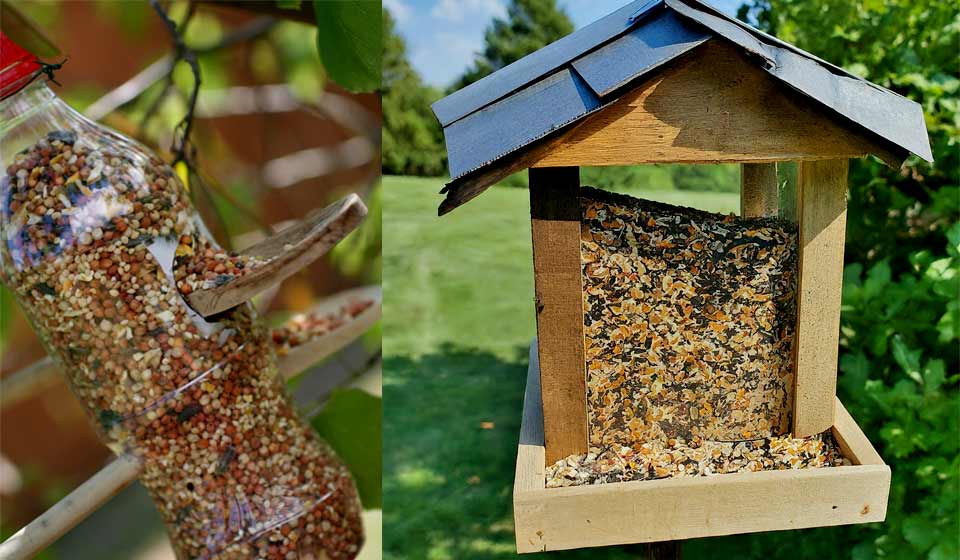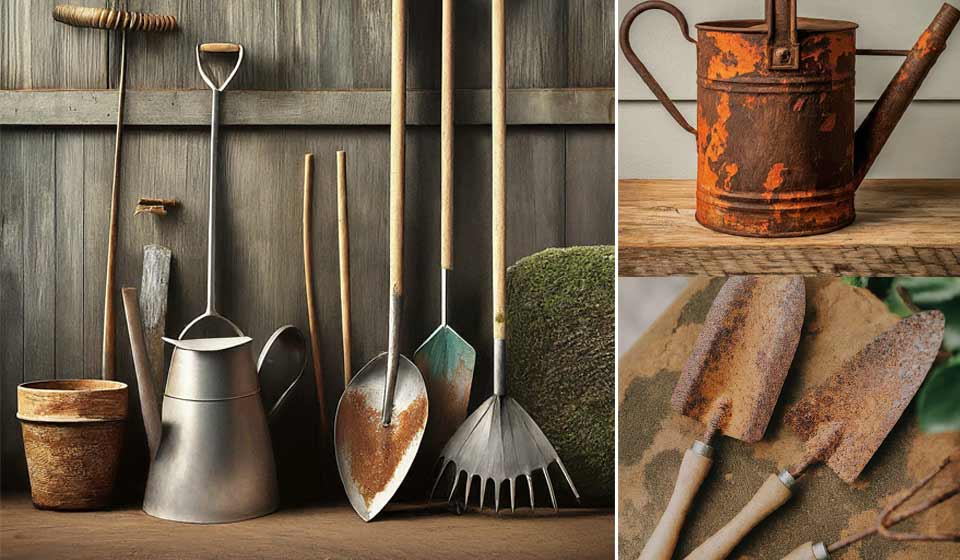In my article, we delve into the fascinating realm of gardening and the many DIY gardening tools that enable it. To garden is to live, not only to enjoy. We may cultivate our food, build lovely outside areas, and be in touch with nature simultaneously.
However, having the correct equipment to succeed as a gardener is crucial. So, I thought I’d write this article titled “Top 10 DIY Gardening Tools” to give you the lowdown on the essentials of gardening and the advantages of creating your equipment.
I will also provide care and maintenance instructions. Now is the time to dive in deep.
Also Read: 12 Top Gardening Tools For Your Ease
Benefits of DIY Gardening Tools
Though it’s a rewarding and entertaining pastime, gardening can be expensive. You may spend much money on plants, seeds, and high-quality equipment. But if you want a well-equipped garden without breaking the bank, you should look into DIY gardening equipment.
In this section, we’ll examine whether these gardening tools benefit you.
i). Uses Home Materials to Save Money
Saving money is a significant perk of using do-it-yourself gardening gear. You may make do with what you already have rather than spending money on fancy equipment.
Anything from discarded metal containers to wooden crates and PVC pipes may fit the bill. Reusing and recycling these goods may help you save money, lessen your environmental impact, and live a greener lifestyle.
ii). Personalized Tools for Specific Needs and Preferences
Every gardener has specific requirements and tastes when it comes to gardening equipment. The beauty of DIY gardening tools is that you may tailor them to your exact specifications.
If you are taller, a longer shovel handle would be ideal, while a smaller watering can would be ideal for more sensitive plants. With this degree of personalization, you can get the equipment you need for your garden, and you’ll have a much easier and more fun time tending to your plants.
iii). Promotes Creativity and Resourcefulness in the Garden
Another way to encourage innovation and resourcefulness is to make your gardening tools. Your task is to find creative solutions utilizing the things you already have rather than depending on store-bought equipment.
In addition to making your garden more unique, this will inspire you to be creative by allowing you to use commonplace things in novel ways.
Also Read: Best Gardening Tools According To Experts
Top 10 DIY Gardening Tools
As a pastime, gardening provides a sense of fulfilment and delight by bringing us closer to nature and enabling us to design beautiful outdoor areas.
Nevertheless, any gardener worth their salt understands that the quality of our equipment determines how well our plants do. There is a lot of gardening equipment on the market, but why not make your own?
You can save money and give your gardening practice a more personalized touch by using DIY gardening tools. This section will examine the top ten tools that can help you save money while encouraging creativity and innovation.
1. DIY Compost Bin:
Soil rich in nutrients is crucial for gardening, and you can make your own compost bin to help with this. A do-it-yourself compost bin can help you make your own organic plant fertilizer.
You need a large plastic or wooden bin, leftover food, and yard debris, such as discarded grass and leaves. Composting these items will provide a sustainable and cost-free fertilizer for your plants.
Also Read: How To Make Compost for the Kitchen Garden?
2. Self-Watering Planters:
Watering plants, particularly in the sweltering summer months, can be a pain unless you have a self-watering planter. However, by investing in self-watering pots, you may save your plants the trouble of constantly watering them.
A simple combination of potting soil, a cotton wick, and a plastic container can create a self-watering planter. If you’re a busy gardener or often forget to water your plants, this DIY tool is for you.
3. Homemade Weed Killer:
Weeds are a gardener’s worst nightmare, but there is a homemade weed killer that can help. Instead of utilizing harmful chemicals, you can create your safe weed killer using common household items like salt, vinegar, and dish detergent.
This do-it-yourself weed killer can keep pesky weeds at bay without harming the environment.
4. Upcycled Garden Markers:
Once seeds germinate, keeping track of what you have planted in your garden becomes much more challenging. However, repurposed garden markers simplify categorizing and designating your plants.
Try using a wine cork, an old spoon, or even a popsicle stick with a permanent marker for a unique writing surface. This DIY item serves a practical purpose while enhancing your landscape’s aesthetic appeal.
5. DIY Trellis:
A DIY trellis is an excellent option for vertical plant growth for gardeners short on space. A trellis for climbing plants may be fashioned from various materials, including bamboo, wood, or even discarded ladders.
Plus, it improves the aesthetics of your landscape while simultaneously saving space.
Also Read: Garden Trellis: A Guide to Support Climbing Plants
6. Garden Tool Organizer:
The key to a stress-free gardening session is a well-organized garden tool organizer that keeps all your instruments within easy reach. A pallet, some hooks, and paint may be transformed into a DIY garden tool organizer.
This DIY accessory will adorn your garage or garden shed with rustic beauty while protecting your equipment from wear and tear.
7. Homemade Pest Repellent:
Using chemical pesticides in your garden may negatively affect the ecosystem and the helpful insects that live there. Instead of using harmful chemicals, you may make your own bug repellent and keep pests away.
You can create your own using garlic, onion, and chilli peppers. This DIY equipment won’t harm your plants or the planet, and it does the job.
8. DIY Rain Barrel:
A DIY rain barrel is an excellent tool for water conservation and reducing monthly water bills. All you need to construct your own rain barrel is a big plastic container and some basic tools.
When the weather becomes dry, you may use this do-it-yourself equipment to water your plants or wash your gardening implements.
Also Read: Best 25 Essential Tools To Start A Kitchen Garden
9. Seedling Starter Pots:
One of the best ways to get a jump start on gardening is to start seeds inside. However, you can construct your pots out of materials like newspapers, egg cartons, or even toilet paper rolls; there’s no need to purchase plastic ones.
In addition to being cheap and eco-friendly, these seedling starting pots are a do-it-yourself project.
10. Homemade Bird Feeder:

Click the image to check the variety on Amazon.
Having birds in your yard does more than make it seem better; they also assist with pollination and keep pests at bay. You can construct your bird feeder using peanut butter, birdseed, and pinecones.
With this do-it-yourself equipment, you can give your garden a more rustic look while entertaining the kids.
Also Read: Unique Gardening Tools That Will Up Your Gardening Game
DIY Garden Tool Maintenance
You know how important the appropriate equipment is for DIY gardening. But you may not understand that these gadgets need adequate maintenance and upkeep, too. This ensures their durability and safety while they are being used.
This section will explain how to clean and store your DIY gardening tools and when they need to be replaced or repaired.
Clean and store tools properly to prolong their life.
Gardening tools must be cleaned and kept like any other item to be effective and last longer. Tools may rust, corrode, and dull from soil, moisture, and weather. They may be less effective and harmful.
After each use, clean your tools of dirt and plant residue. A brush, cloth, or hose may do this. Warm water and mild soap may remove stubborn dirt. Fully dry tools before storage to prevent rust.
Keeping tools dry and protected is also vital. This might be a shed, garage, or house tool storage room. Hanging tools high off the ground prevents corrosion and damage. Oil metal components to prevent moisture damage.
Also Read: Gardening Tools: What Are Common Gardening Tools?
Signs of Tool Replacement or Repair
Your gardening equipment will eventually wear out or break, regardless of how careful you are with them. Keep an eye out for these warning signs:
1. Rust or corrosion: These are telltale signs that your tools aren’t safe to use. They may not work as well as intended and even hurt you or your plants.
2. Blade dullness: Using pruning shears and other cutting equipment may develop dullness. This makes cutting through stems and branches more challenging and increases the risk of uneven cuts, both of which are bad for your plants.
3. Loose or broken parts: It is critical to repair or replace any damaged or loose components on your instruments as soon as you discover them. Parts that aren’t securely fastened may reduce the tool’s effectiveness and increase the risk of mishaps.
4. Wear and tear: Deterioration is a natural part of any tool’s lifespan. But if your tools are worn out, you should probably get new ones. Broken or split handles and chipped or twisted blades are examples of this.
Proper upkeep will ensure the safety and longevity of your DIY gardening tools. Cleaning and maintaining them correctly will preserve their longevity. Don’t hesitate to replace or fix them.
Quality equipment and good maintenance make gardening more pleasurable and efficient. Feel free to get your hands filthy, knowing your tools are ready. Happy gardening!
Also Read: Multifaceted Benefits of Raised Bed Gardening
Additional Tips
Here are a few last things to remember for DIY gardening equipment projects to be successful:
1. Use high-quality materials: Choose high-quality materials to ensure your tools last long and work well. Investing in durable materials will also ensure that your gardening equipment survives for many seasons.
2. Follow instructions carefully: Follow the directions closely while following a step-by-step lesson. A tool that doesn’t function as expected might result from omitting processes or using inaccurate measurements.
3. Don’t be afraid to experiment. Try new things and use various materials and ideas. You might devise an original design for gardening tools.
4. Prioritize safety: Safety must always come first when working with tools. Always use care and wear safety gear when working with sharp or heavy objects.
5. Share your creations: If you’ve had a lot of trouble making gardening equipment on your own, show them out! Your ability to motivate others to forge their tools is limitless.
Also Read: The Integration of Technology in Kitchen Gardening
Conclusion
The fulfilling hobby of gardening can create a lovely outdoor space and foster a connection with nature. Creating your DIY gardening tools can save money, reduce waste, and give your yard a unique touch.
Many inventive methods exist to maximize your gardening endeavours, from building a compost bin to keeping bugs away with homemade repellents. Thus, why not begin your do-it-yourself initiatives and see how your garden grows?
Recent Posts
Green Tropical Illustration Digital Wallpaper: Psychological Benefits
In this digital world, a wallpaper might be defined as a beautiful background wall that defines mood, productivity, and even mental well-being in today's generation. In this way, green tropical...
Here is reply of high-demand removable wallpapers. The wallpaper industry has changed a lot in recent times, with the launch of removable wallpaper being seen as a blessing for homeowners, renters,...












